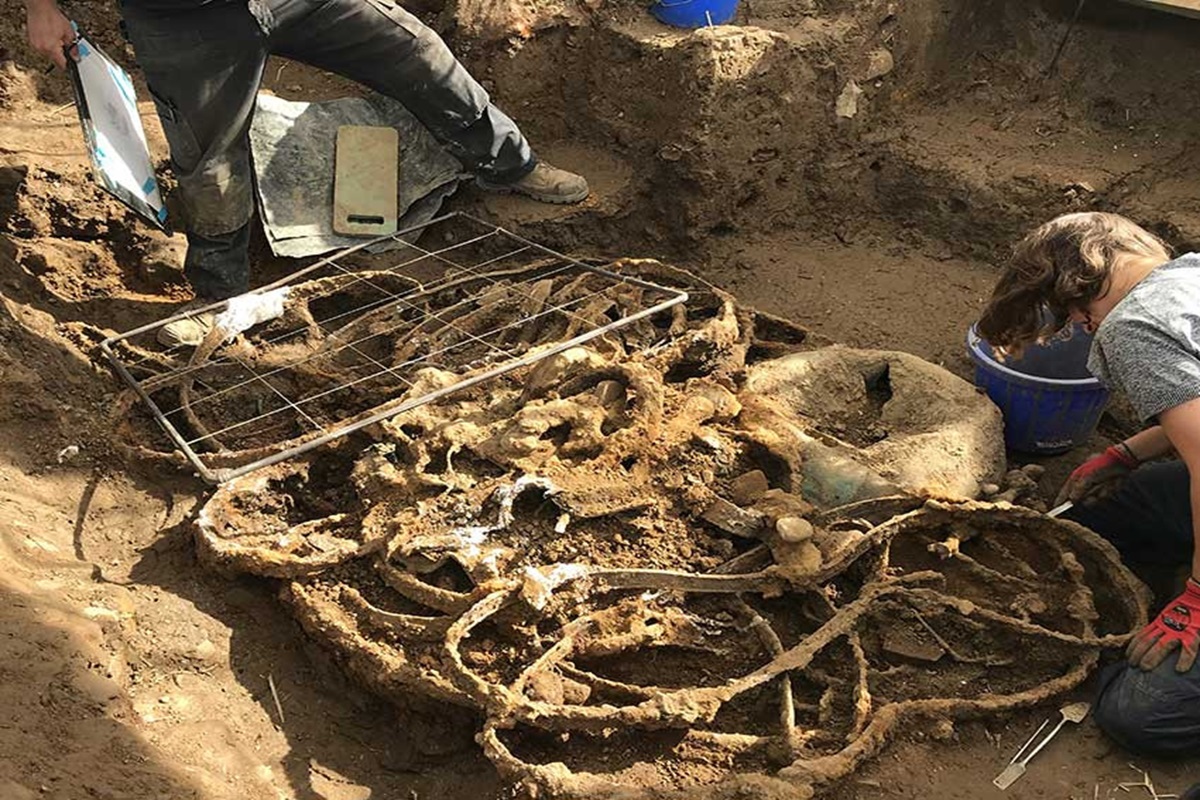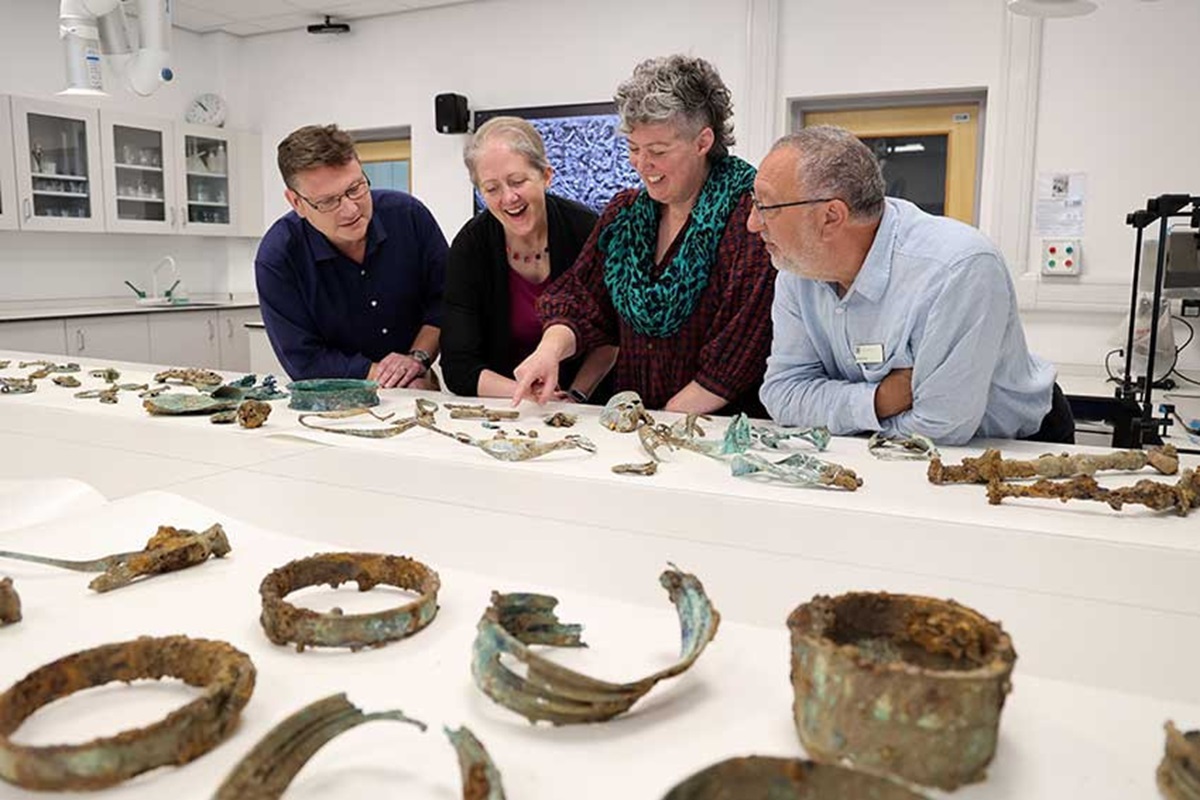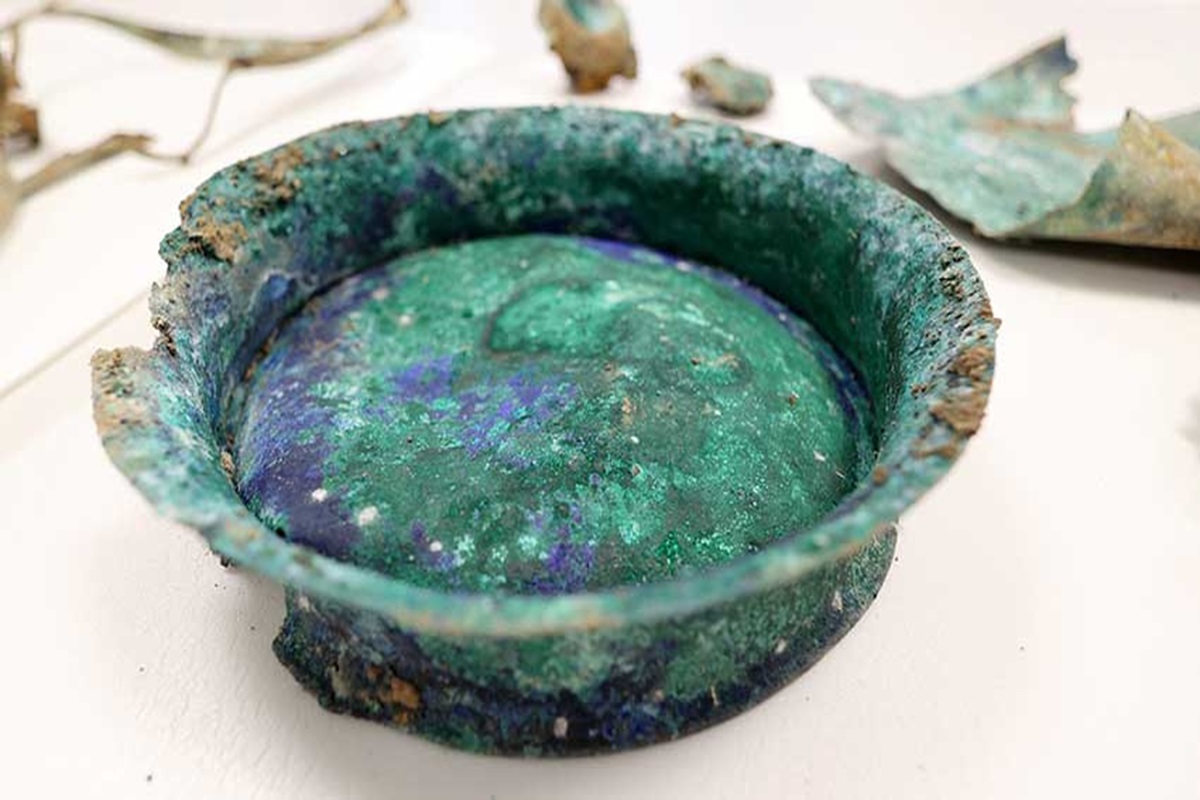The Melsonby hoard is currently the largest Iron Age find in the United Kingdom and possibly even in Europe. Recent analysis has revealed that the Celtic elites of northern Britain were far wealthier and more powerful than archaeologists had imagined. Discovered in December 2021 by metal detectorist Peter Heads, the Melsonby treasure is a vast hoard of over 800 objects dating back to the Iron Age. This archaeological find was excavated in 2022 by researchers from Durham University, with support from Historic England and the British Museum. On March 25, 2025, the first results of the study were published. These exceptional artifacts are believed to have been buried during the 1st century AD, shortly before the Roman conquest. The Melsonby Hoard is currently the largest and most important Iron Age treasure trove in Great Britain.
An unprecedented archaeological discovery in the United Kingdom

Remains of two- and four-wheeled chariots, horse harnesses, and iron wheel bands were found clustered together in pits. Archaeologists were also surprised to unearth ceremonial spears, two decorated cauldrons, and horse harnesses adorned with coral and colored glass. This unprecedented discovery is leading to a reassessment of the status and wealth of the elites living in northern Great Britain 2,000 years ago.
In December 2021, Peter Heads was alerted by a strong signal in a field near the village of Melsonby in North Yorkshire, England. Intrigued, the amateur metal detectorist began digging in the ground and found metal objects that appeared to be ancient. He decided to notify the authorities. Tom Moore, director of the Department of Archaeology at Durham University, rushed to the site. There he discovered a significant archaeological site in an exceptional state of preservation.
More than 800 artifacts unearthed
An excavation campaign was quickly launched in 2022. Funded by Historic England with support from the British Museum, these explorations uncovered more than 800 metal artifacts spread across two ditches. Among the most impressive are the remains of at least seven vehicles (chariots and two- and four-wheeled carts) accompanied by 28 iron wheel bands, deliberately deformed.
These intricately crafted pieces have almost no parallels in Britain! Sophia Adams, curator at the British Museum, explains: “This is the largest hoard of horse harness and vehicle parts ever found in Britain. It is significant not only for the quantity of objects buried together 2,000 years ago, but also for their quality and diversity.”
Objects deliberately destroyed in a ritual act

Archaeologists also discovered bridle bits, guide rings (used to hold the reins in place) and harness parts for 14 ponies. Interestingly, some of these harness items were inlaid with Mediterranean red coral and colored glass. Three ceremonial spears and two vessels (a type of cauldron) were also unearthed. One of them was decorated with two stylized human faces. Some of the artifacts were heavily oxidized and formed extremely compact blocks. One of these conglomerates was therefore extracted for examination by X-ray tomography in the laboratory.
Analysis of the Melsonby hoard brought a number of surprises for researchers. They found that many of the buried objects had been deliberately destroyed and burned! But why? These strange ritual practices may have been part of a symbolic process through which the local elite demonstrated their power and wealth. Archaeologists believe that they were burned on a funeral pyre before being buried. However, the absence of human remains at the site casts doubt on this hypothesis…
An exceptional treasure that sheds new light on the British Iron Age

Until now, it was commonly believed that southern Great Britain was the center of power during the Iron Age. The discovery of this exceptional treasure has changed everything. Located not far from Stanwick (a settlement in the kingdom of the Brigantes), the Melsonby site shows that northern Great Britain was not isolated during this period. The inhabitants of this region enjoyed the same material resources, wealth, status, and trade networks as those in the south.
Professor Tom Moore believes that the objects unearthed belonged to an individual who was “probably part of a network of elites across Britain, Europe, and even the Roman world.” The “Melsonby hoard” has been valued at around €304,000. It is currently being kept at Durham University, where research is continuing. A fundraising campaign has been launched by the Yorkshire Museum. This prestigious institution is considering acquiring it for display in England and making it accessible to all.



